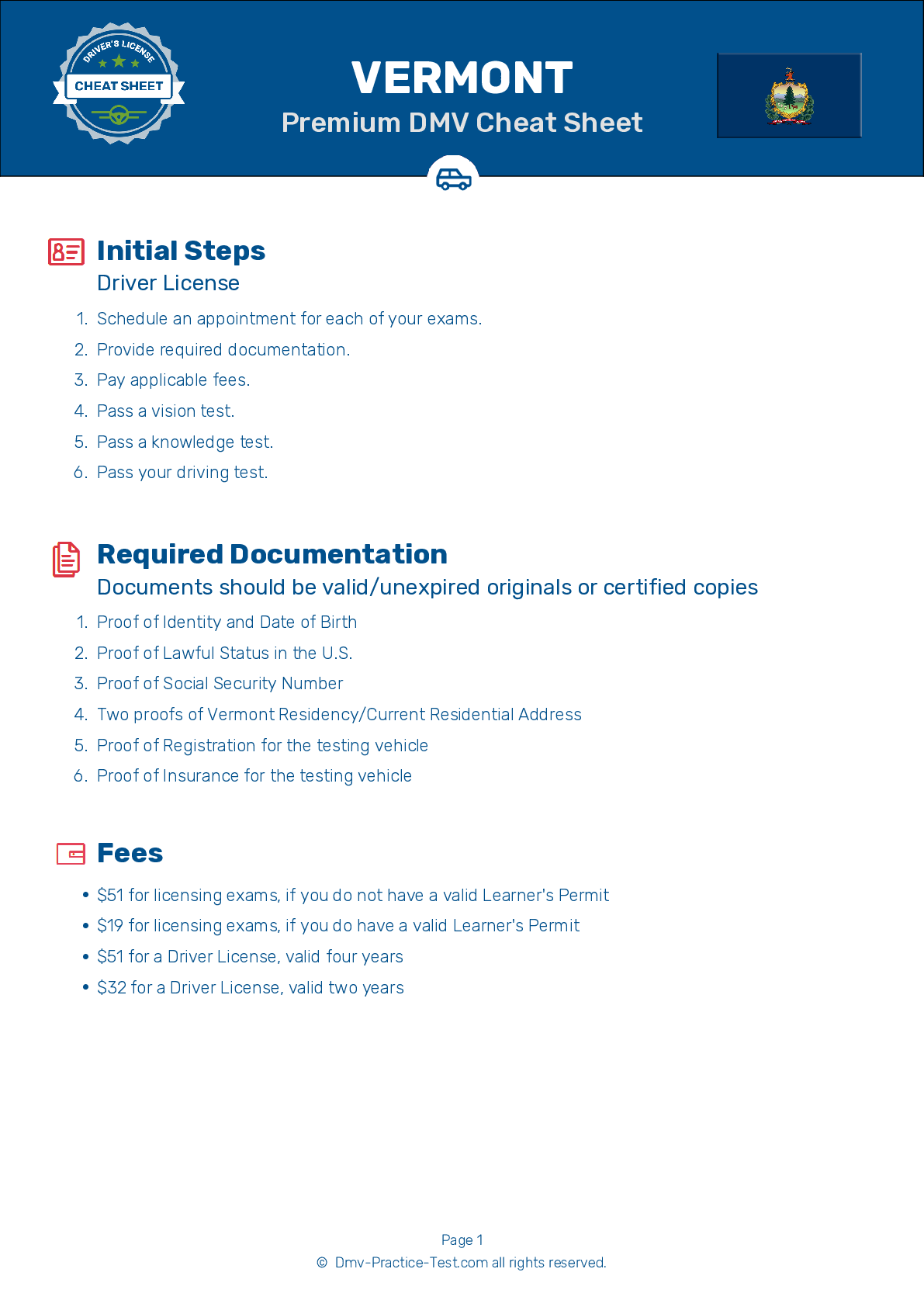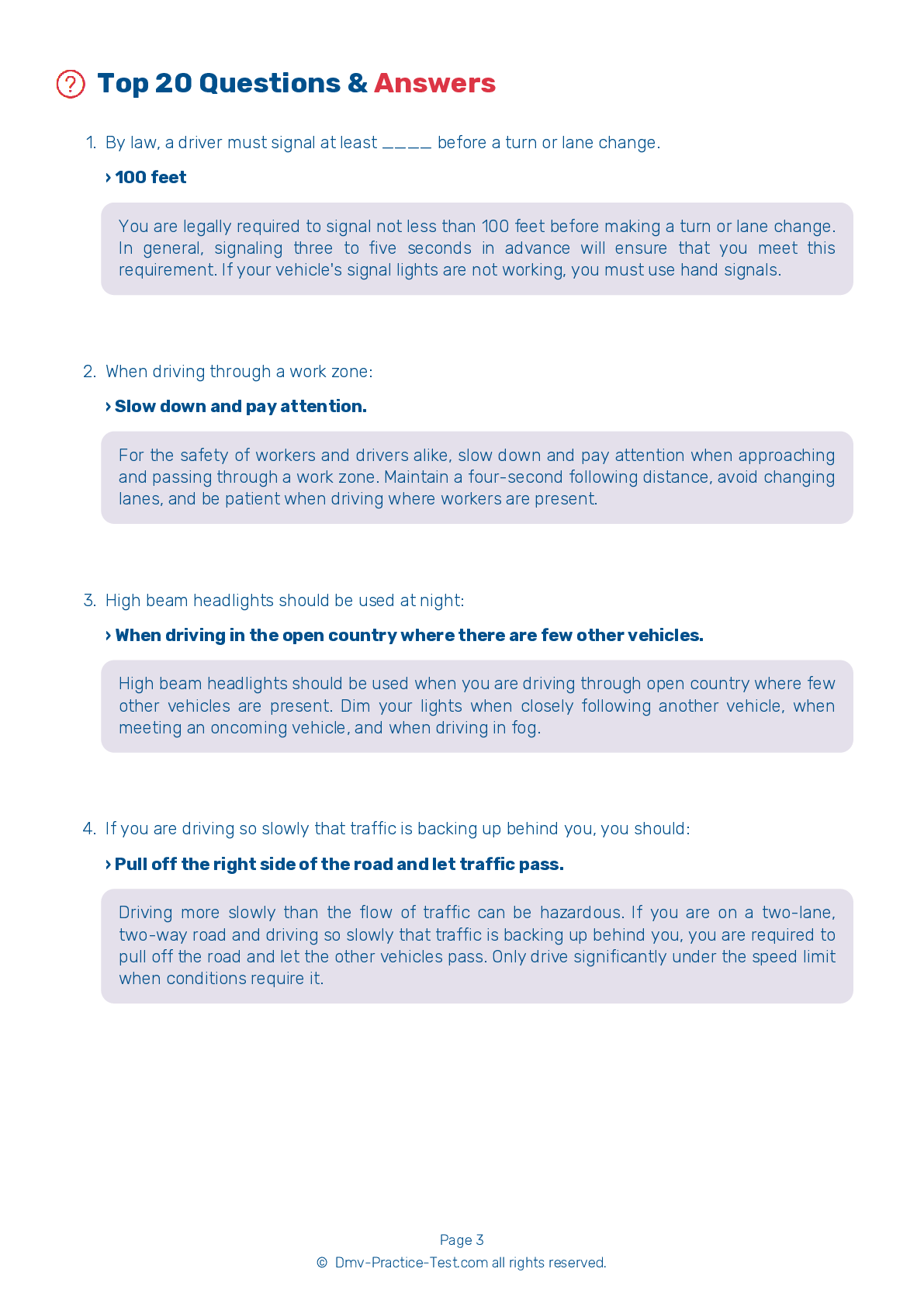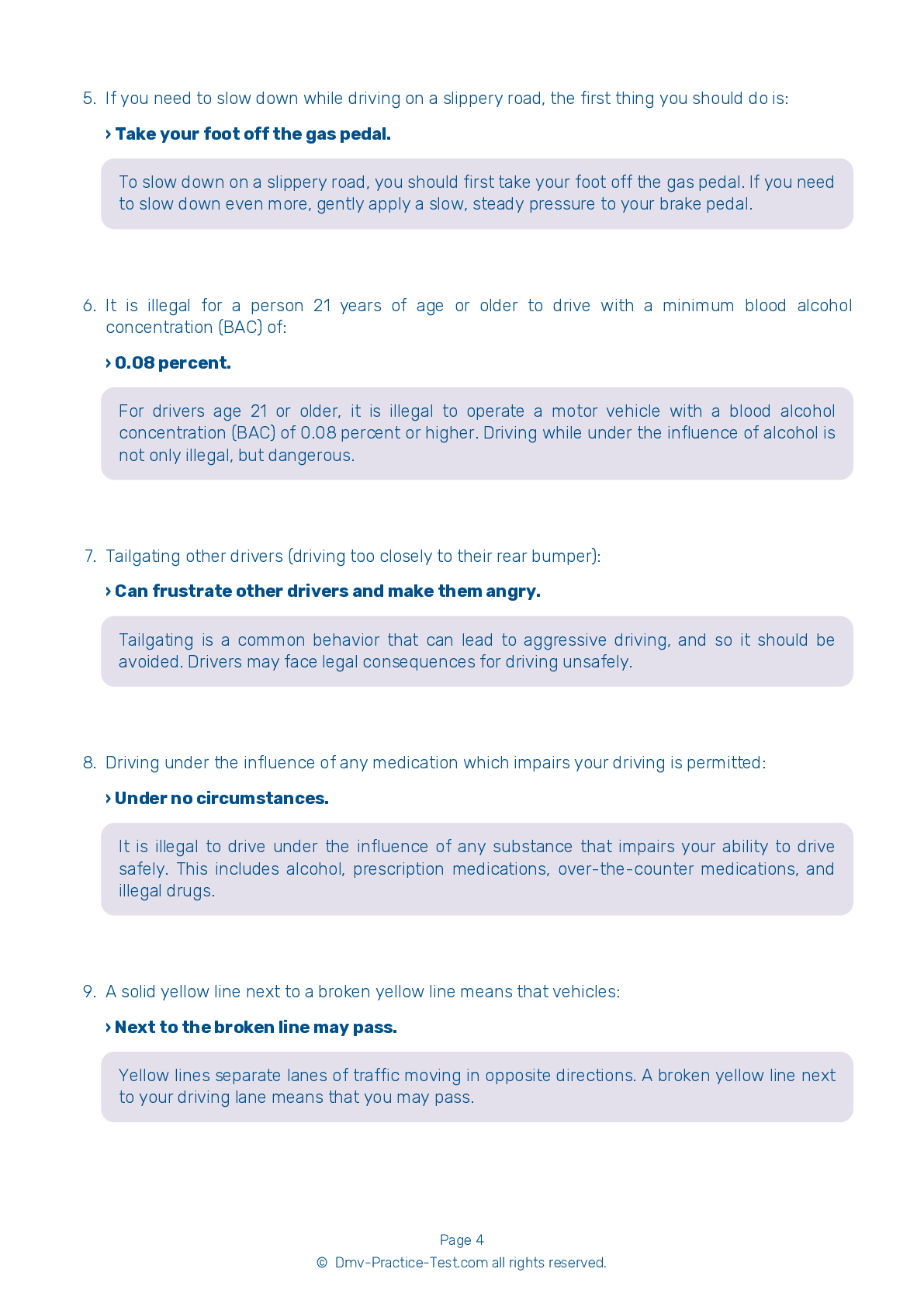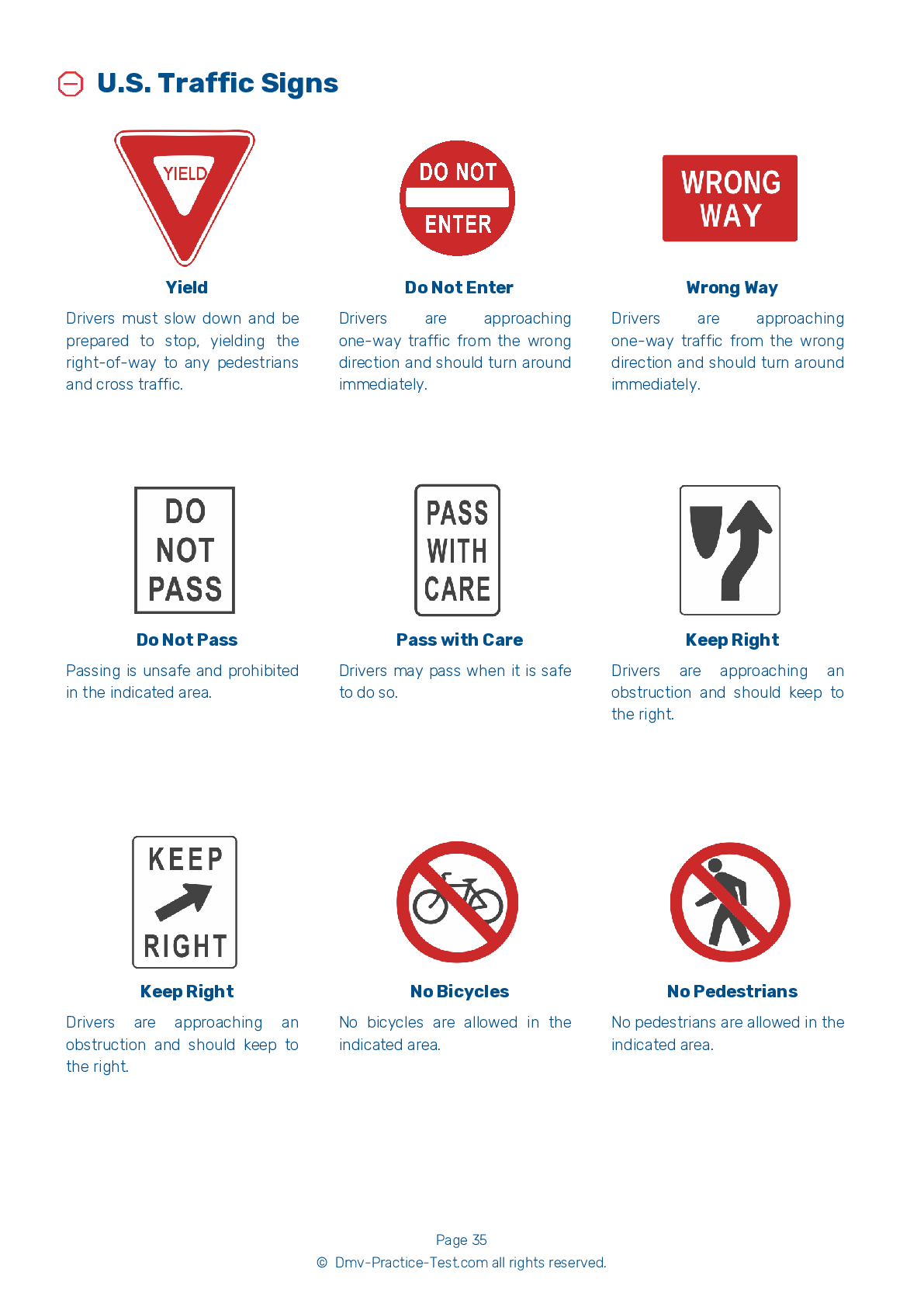FREE Vermont DMV Practice Test #12 Page 3 of 3
The Vermont DMV practise examinations have been updated for January 2025. It includes questions based on the Vermont Driver Handbook's most significant traffic signals and legislation for 2025. Use actual questions that are very similar (often identical!) to the DMV driving permit test and driver's licence exam to study for the DMV driving permit test and driver's licence exam.
On the practise exam, each question gets a tip and explanation to help you remember the concepts. The written component of the official Vermont DMV test will include questions about traffic rules, traffic signs, and driving statutes, as well as knowledge from the Driver Handbook.
To obtain a passing grade, you must correctly answer 16 of the 20 questions. Use the practise exam provided by the Vermont Department of Motor Vehicles to help you prepare for your instruction permit or driver's licence.
The DMV exam is available in several languages.
Using any kind of testing assistance will result in an automatic fail, and the DMV may take additional action against your driver's licence, so stay away from it.
14 . You must pull over to the edge of the road and allow an emergency vehicle to pass:
You must pull over to the right edge of the road and stop for an emergency vehicle with flashing lights, regardless of whether it is approaching you from behind or from the opposite direction.
15 . Many crashes are caused by:
Many crashes are caused by drivers who are driving too fast for conditions. Always drive within the legal speed limits and decrease your speed any time conditions are less than perfect.
16 . If you are found guilty of passing a stopped school bus using its red warning lights:
In the state of Vermont, failure to stop for a stopped school bus is punishable by a substantial fine and the assessment of five points on your driving record. Always come to a complete stop when approaching a stopped school bus that is using its warning lights and stop arm. Use extra caution when driving where children may be present.
17 . The risk of hydroplaning can can be reduced by driving:
Because hydroplaning is caused by driving too quickly in wet conditions, the risk of it happening can be reduced by driving more slowly.
18 . Drivers should use extra care when driving near snowplows because:
You should be especially careful when driving near snowplows because they are wider and slower than other vehicles. Snowplows often create a cloud of snow, causing visibility in the surrounding area to be lowered.
19 . This sign tells you that:
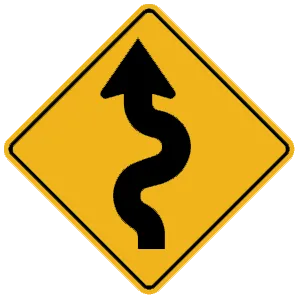
This sign warns of an upcoming winding road with three or more curves.
20 . Drivers who have consumed alcohol before getting behind the wheel:
Alcohol is a depressant that negatively affects judgment, vision, concentration, understanding of reality, and reaction time. It is never safe to consume alcohol in any amount before getting behind the wheel of a car.
See the exact questions that will be on the 2025 Vermont DMV exam.
99.2% of people who use the cheat sheet pass the FIRST TIME
LT gives us an insight on how the cheat sheet provided her with all the study questions she needed before taking her test.
Joe initially studied with the handbook and failed his test, he eventually found us online, studied and pass his test the first time around.
2025 Vermont | Frequently Asked Questions
1. Not checking mirrors and blind spots before changing lanes or turning.
2. Speeding or driving too slowly for the conditions or posted speed limit.
3. Not coming to a complete stop at stop signs or red lights.
4. Incorrect signalling or not signalling at all.
5. Poor parking, especially parallel parking.
Remember, practice makes perfect, so take time to hone your skills.
